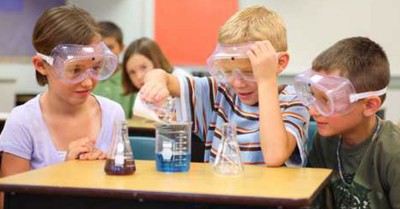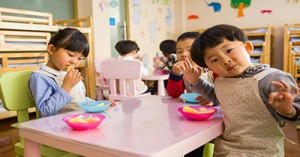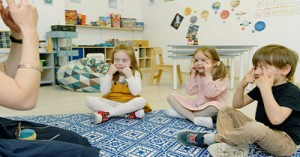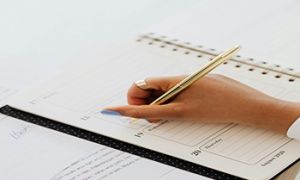Children are naturally curious about their surroundings; this is most often expressed in the way they tinker with things, explore what happens next and ask questions about the world. Such innate inquisitiveness provides the ideal base to build hands-on exploration activities so that children not only have fun discovering but learn concepts and theories by applying them in real life. The following article provides information on leading children in hands-on exploration.
Prepare Ahead
For exploration to happen meaningfully, an educator has to make the time and effort for some essential groundwork. Here are a few aspects of advance preparations so that you can teach intentionally:
Be clear on the learning goals so that you know what concepts you want children to learn from the experience. For example, you may want to plan an exploration activity to demonstrate the water cycle or plant growth – in each case, the preparations will be different. This stage of preparation will also help you avoid teaching misconceptions and to identify concepts that is too abstract for young children to understand. For instance, a common misconception is that plants get their food from the soil whereas plants make their own food through photosynthesis
Be thorough with all the steps of the exploration activity and the strategies you will use to support children’s learning.
- Try the activity yourself so that you have a first-hand idea of how the experience will unfold; this will also give you the opportunity to tweak any steps to make it suitable for the setting. for example, if any child is averse to handling mud, doing the activity once beforehand will give you the space to plan an alternative for the child. This also helps you plan for unexpected occurrences, such as seeds not sprouting or taking longer to sprout than expected.
- Gather materials and supplies once you have a good idea of how you will proceed with the activity. This is an important step since supplies and logistics might be specific and not always easily sourced. For example, if you are planning on an exploration activity on sounds, you will have to plan for an appropriate space without extraneous noise or interruptions.
- Plan open-ended questions so that the children can be supported to think about what they are doing, reason and solve problems. Such questions usually focus on the what, why and how of the experience. For example, ask, “What do you notice about how the grass seed looks and feels?” rather than, “What colour is the grass seed?” These kinds of questions will encourage children to think more deeply and keep exploring. Additionally, think of ways you can scaffold instruction for children at different levels.
Guide Children’s Experiences
The heart of hands-on exploration lies in children’s own experiencing but it can only be made meaningful when intentionally and appropriately guided by the educator. To make this happen, here are the following steps.
- Work alongside children so that you are their co-explorer. As you go through the different steps of the activity – like digging the ground, moistening the soil, planting seeds and so on – talk about what you are doing, what you are thinking, and what you are wondering. Your questions and comments such as “I wonder what would happen if…” or “Why do you think…” will model for children the process of scientific inquiry and provides examples of how to observe, make predictions, try things out, collect data, and draw evidence-based conclusions.
- Carefully watch and listen so as to understand what children are doing, saying, how they are using materials and trying to solve problems. Close observation will help you evaluate how their explorations are leading to learning and to support children according to their individual needs.
- Ask open-ended questions to encourage children to articulate their own observations and ideas rather than give “correct” answers. Encourage children to use all of their senses and invite them to describe what they are doing and noticing, like, “What do you notice about these seeds? How do they look, feel, and smell? How are they the same or different from other seeds we’ve planted?” Then help them reason and develop their ideas with questions like, “Why do you think that happened? What do you think will happen if we…? How did you figure that out?”
- Look for teachable moments during the experience when you can connect an observation, comment or realization to a curriculum concept. For example, if a child notices that an object has holes, use it to connect with floating and sinking concepts.
- Make opportunities for peer discussion. Children learn best when they bounce ideas and questions off each other. So encourage them to share comments and explain their thinking to their peers, like “What do you think might happen to the “goop” when we add more water? Turn and tell your partner what you are thinking”. Similarly facilitate a comparison of observations and ideas with questions like, “How was that different from what you observed?”
- Model the language. In order to fully mine the learning potential of hands-on exploration activities, especially in science experiments, it is important that children use the relevant vocabulary. however rather than ‘explain’ the meanings of words like observe, sort, categorize, measure, and compare out of context, a far more effective way is to introduce the language of science is when children are actively engaged in hands-on exploration. For example, when the children are planting the seeds, say “Let’s observe the seeds. How many days do you predict it will take for the seed to sprout?”
- Additionally look for ways you can extend children’s thinking even as they are engaged in an activity For example, if children are learning about seeds and plants, you might provide an opportunity for children to explore different kinds of indoor and outdoor plants at a nearby nursery or botanical garden.
- Guide rather than direct. All the above ways ensure that your interactions facilitate and stimulate children’s thinking as they are engaged in hands-on exploration. On the other hand, merely reciting the facts or passing instructions is certain to stamp out children’s natural interest and curiosity, thereby dousing any learning potential.
- Document what children are doing and saying by taking notes and photographs. This will help you deduce patterns in their thinking and plan for further experiences. Like, if you notice that most children think that big items sink and small items float, you can introduce a big item that will float to challenge their thinking.
Support Children To Make Connections
While hands-on explorations may be fun and interesting by themselves, for them to lead to learning, it is important that educators lead children into making connections with what they already know and new knowledge. Here are some tips on how to go about this:
- Build on prior knowledge. Think about other learning experiences children have had before and help them connect previous experiences to new ones. For example, if children are exploring which objects roll and which ones slide, you can ask “Where have you seen a slide? How do slides look?” to connect to children’s previous knowledge about slides and sliding motion.
- Make connections across contexts. When children engage with a particular phenomenon or concept, like plant growth, plan experiences in different settings, contexts, or venues such as indoors, outdoors, in videos, at home as well as across domains like science, arts, and routines. For example, if children are learning about seeds, read a book before a hands-on exploration to introduce the idea, watch videos on seeds after the exploration to extend the learning and provide context and later during snack time, invite them to notice any foods that contain seeds.
- Give children opportunities to reflect in multiple ways. When doing the exploration activity, children should be allowed the time to observe or predict and then share these with a partner or group. Also provide materials so that they can record and represent their observations and ideas by charting, drawing, writing, creating a collage or any other medium. Similarly, after the activity, invite children to create drawings, labels, or diagrams so that they can share their new learnings with peers. For example, after children have made their charts or drawings, facilitate discussions with questions like, “What happened when we poured the warm water on the ice? How was it similar to or different from what we thought would happen?” The more children engage in peer conversation, the better they will get at discovering new ways of thinking and expressing them in the language of enquiry.
Children have an innate curiosity for the world around them. They are curious about how things operate, what they do, and what will take place next. By leading kids in practical science investigations, educators can foster kids' inherent curiosity.
Reference:
Leading Children in Hands-On Exploration, Resources For Early Learning







 As an Educator in Australia, your pay rate falls under the Children’s Services Award 2010. This award states the minimum amount that an employer can
As an Educator in Australia, your pay rate falls under the Children’s Services Award 2010. This award states the minimum amount that an employer can When working as a qualified Early Childhood Teacher (with a university degree) within a service, your rate of pay will come from the Educational Services
When working as a qualified Early Childhood Teacher (with a university degree) within a service, your rate of pay will come from the Educational Services When working as a Diploma Qualified Educator your pay rate is from the Children's Services Award 2010. This Award states your minimum rate of pay
When working as a Diploma Qualified Educator your pay rate is from the Children's Services Award 2010. This Award states your minimum rate of pay When working as a Cert 3 Qualified Educator, your pay rate is from the Children's Services Award 2010. This Award states your minimum rate of
When working as a Cert 3 Qualified Educator, your pay rate is from the Children's Services Award 2010. This Award states your minimum rate of Educational Leaders play a crucial role in their early childhood service by ensuring that the educational program aligns with best practices and supports the holistic
Educational Leaders play a crucial role in their early childhood service by ensuring that the educational program aligns with best practices and supports the holistic In early childhood education and care, ratios are more than a technicality—they are a frontline safeguard. Every child deserves responsive supervision, emotional connection, and developmental
In early childhood education and care, ratios are more than a technicality—they are a frontline safeguard. Every child deserves responsive supervision, emotional connection, and developmental With the new national child safety reforms kicking in on 1 September 2025, early childhood services like yours have a real opportunity to lead the
With the new national child safety reforms kicking in on 1 September 2025, early childhood services like yours have a real opportunity to lead the Here’s a comprehensive Mobile Phone and Smart Watch Policy tailored for early childhood education and care (ECEC) services in Australia, aligned with the latest 2025
Here’s a comprehensive Mobile Phone and Smart Watch Policy tailored for early childhood education and care (ECEC) services in Australia, aligned with the latest 2025 The Sea of Fish Challenge is a national initiative that invites children, educators, families, and communities to create and display fish artworks as a symbol
The Sea of Fish Challenge is a national initiative that invites children, educators, families, and communities to create and display fish artworks as a symbol Across the early childhood education and care sector, educators are sounding the alarm: current staffing ratios are insufficient to deliver safe, meaningful, and developmentally appropriate
Across the early childhood education and care sector, educators are sounding the alarm: current staffing ratios are insufficient to deliver safe, meaningful, and developmentally appropriate


